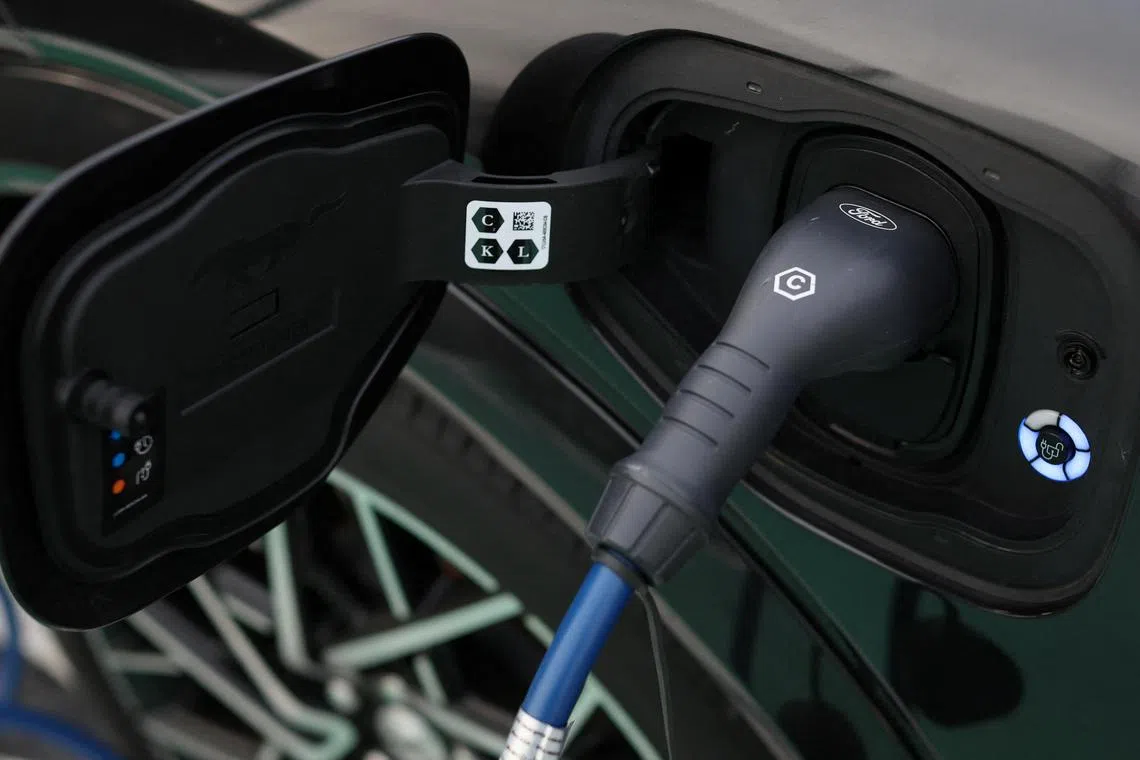Torque Shop: On EV battery capacity
Sign up now: Get ST's newsletters delivered to your inbox

An electric vehicle's battery management system will prevent the cells from being overcharged.
PHOTO: REUTERS
Shreejit Changaroth
Follow topic:
The specification table of some electric cars lists two figures for battery capacity. One is “Nominal” or “Gross”, while the other is “Nett” or “Useable”. What do these figures imply? When the car is fully charged, do I assume the capacity is the gross or nett figure?
The energy flow in and out of a battery pack used in electric vehicles (EVs) is monitored and controlled by a sophisticated battery management system (BMS).
Its task is to maintain the reliability and condition (state-of-health or SoH) of the battery pack. To this end, the BMS continuously measures and adjusts the control of temperature, current flow in each individual cell, a group of cells and the entire battery pack.
One of its critical functions is to prevent overcharging and over-discharging, either of which will cause cell deterioration over time. The BMS also ensures that the battery’s state-of-charge (SoC) is therefore never zero or 100 per cent.
In addition, all rechargeable batteries – lithium-ion, in particular – are highly sensitive to the number of charge/discharge cycles as well as the SoC. Frequent charging from 30 to 70 per cent is far more conducive to longevity and reliability than performing the same cycles from 10 to 90 per cent.
Both the maximum and minimum electrical energy (in kWh) that the EV drivetrain is allowed to use is also limited by the BMS. As with any sound engineering design, EV batteries are sized with at least 5 per cent extra over the stated useable capacity. In fact, it is highly likely that many EV manufacturers actually build in even more than the declared nominal or gross battery capacity.
This does not mean that the remaining cells are never used. Instead, the BMS also maintains overall balance of cell-charge so that individual cell duty is equally shared.
When an EV is charged to, say, 80 per cent according to the on-board computer, it is based on the nett or useable battery capacity in kWh. As an example, an EV with 75kWh useable capacity charged to 80 per cent will give up to 45kWh of energy for driving before the SoC drops to 20 per cent.
Assuming an average consumption of 20kWh/100km, 45kWh will provide a realistic range of 225km – which is a pretty comfortable range if you live in Singapore.

